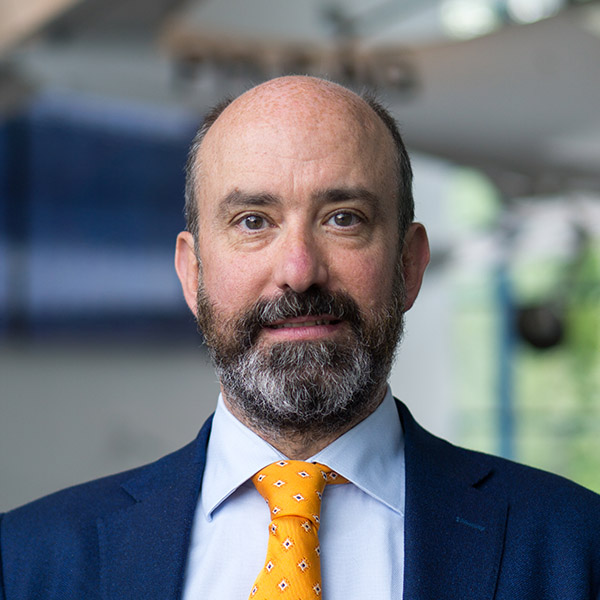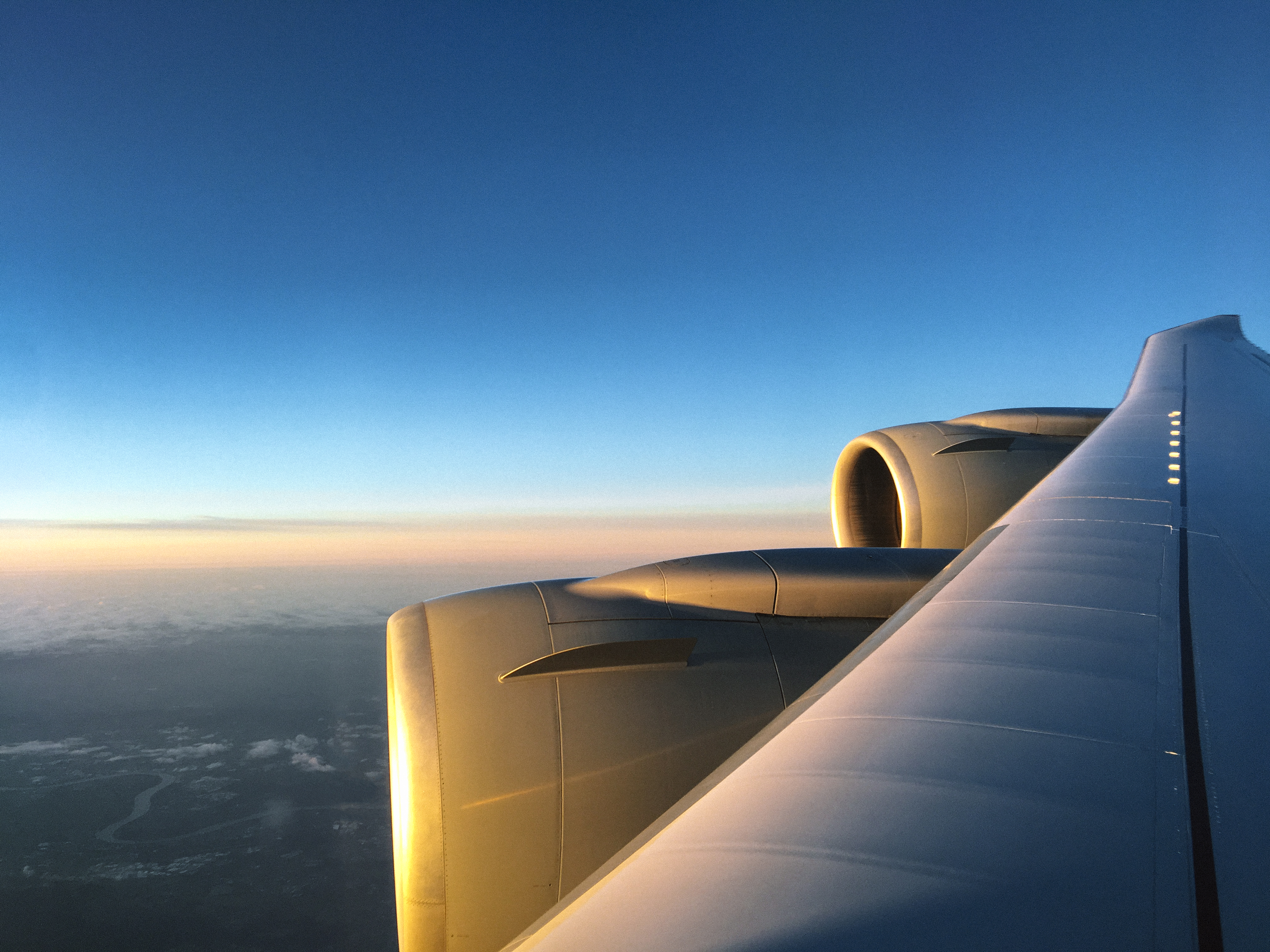Foto: Ixefra, GettyImages
Gas turbines are best known as the jet engines that power aircrafts. But they also are the work horses of large power plants generating electricity for our industry and homes. At TU Delft, at both the Faculty of Aerospace Engineering (AE) and the Faculty of Mechanical Engineering (ME), researchers work on this topic. Because of the importance to Dutch industry, the Foundation Gas Turbine Education (‘Stichting Gasturbine Onderwijs’, SGO), part of the Dutch Gas Turbine Association (DGTA), co-funds gas turbine-related education and research at TU Delft.
On Friday 7 December, the Deans of the two Faculties signed the agreement to extend the collaboration between TU Delft, SGO and university of applied sciences InHolland. A perfect occasion for three experts involved in the collaboration to discuss the changing role of gas turbines during a round-table discussion. TU Delft researchers Prof. Sikke Klein (Process & Energy Department, 3mE), Prof. Piero Colonna and Dr. Wilfried Visser (Aerodynamics, Wind Energy, Flight Performance & Propulsion Department, AE) explain how gas turbines are essential for the transition to a renewable energy mix.


The title of the inaugural speech of Prof. Klein was “Make Gas Turbines Great Again”. Does the gas turbine have a negative image?
Colonna: “No, I strongly believe that’s not the case. I am inherently biased but I truly think that the gas turbine is one of the modern wonders. Spectacularly fantastic when it comes to the technological level. The efficiency that gas turbines can reach is a matter of wonder even for experts. The level of reliability of aircraft turbines is mind-numbing.”
Visser: “And they provide the cleanest way of producing electric power from fossil fuels.”
But still, the gas turbine market is shrinking.
Visser: “For ground-based power generation, less turbines are being sold, especially in Europe. From a distance it’s not looking very bright. But eventually we will need better and more sophisticated turbines to help develop the sustainable society, to deal with the intermittent nature of solar and wind energy sources.”
Klein: “Highly efficient gas turbine power plants that were closed some years ago are opening up again, like the Clauscentrale in Maasbracht, because there’s a demand for flexible power, especially now that nuclear energy and coals are being phased out. There is a large gap between power demand and the variable power supply from solar and wind. So, in the coming years there will be an increasing demand for power from high-efficiency gas turbine power plants.”
Visser: “And also for service and repair.”
Klein: “Wind and solar energy are part of the future. We should not fight against it but work together. With the current high fuel efficiency of up to 63% reached by gas turbine systems, they are playing an important role in the transition to renewable energy sources.”
The Netherlands doesn’t manufacture full gas-turbine systems, only components. What does this mean for your research ambitions?
Visser: “My work at TU Delft is co-financed by SGO/DTGA. It’s fair to say that most of its members are primarily interested in maintenance, operation and repair. At TU Delft, I always feel a little bit responsible for this area. Still, the engineers working at these companies need to be educated in the fundamentals and in design aspects, because that’s a prerequisite to be able to optimize maintenance, repair and overhaul.”
Klein: “We have a responsibility to deliver good engineers to industry. But this should go hand in hand with academic, innovative research.”
Colonna: “I would like to wipe away the suggestion that academia and industry are opposites. Look at facts. In some projects we are fully funded by companies. They wouldn’t give us their money if they didn’t think what we are doing is of practical interest. Our mandate from society is to educate engineers and to push the boundaries. We try to find a balance between the different requirements.”
What’s Delft’s position in the gas turbine area?
Klein: “With two faculties and a lot of adjoining disciplines, we’re very well embedded in the broader research community. All connections are there: with other countries, with companies. We’re benefitting from the academic and industry sides. Both sides inspire us and guide our research.”
Colonna: “We have to be so good in order for turbine manufacturing companies from other countries to come to us. And they do come to us.”
Visser: “It helps that the Faculty of Aerospace Engineering is pretty unique, even from an international perspective.”
And the Delft graduates?
Colonna: “They’re hired even before graduating.”
Klein: “Companies hosting our students for internships really value them for their project management skills. They are pro-active, manage their own research, take responsibility, communicate well: they know how to do research from A to Z. Yet we should not forget that the fundamental laws of thermodynamics are still there, and that students should know them.”
Colonna: “I agree. We balance teaching both type of skills. This balance is reached in a dynamic way. Sometimes, the balance is a bit off.”
Where are the graduates hired?
Klein: “There are many interesting positions for our graduates. Both at more conventional companies like ExxonMobil but also start-up and consultancy companies.”
Visser: “Large industries tend to hire highly trained engineers from Delft in management positions and not in technical roles. For example, aircraft engine maintenance is big business, yet there are very few academically trained engineers working in that area.”
Colonna: “There should be more courage in the Netherlands to fund academic research into maintenance and operation aspects. The message we are constantly sending is: try us. If you do, we will bring benefit to your business. But the problems have to be challenging and risky, and not routine.”
Visser: “Some Dutch companies are now slowly discovering that there’s value in hiring academically trained engineers in technical roles because they can achieve cost reductions, increase safety and reduce emissions.”
Colonna: “Also in the area of component manufacturing, there are examples of Dutch companies who evolved from ‘blueprint manufacturing’ to providing original technologies – which is not possible when you don’t hire the right people to work the tough problems. This is what the Netherlands should do more.”
What do the gas turbines of the future look like?
Visser: “If the sun shines and there’s wind, you need less turbines. But if the sun is gone and the wind drops, you need to rapidly fire up the power stations. The very big conventional ones currently may need up to a full day to start up. So, instead of turbines in continuous operation, which used to be the focus, we now need different types of gas turbines that are capable to rapidly start and stop, without compromising their operational lifetimes.”
Klein: “Still, I believe we don’t have to invest in new fossil power plants but in improving the old ones to make them capable of coping with those variations. The existing gas turbines can do it; maybe not the full fleet but 90% of it.
Colonna: “Let’s not forget that these power stations are extremely expensive, so it’s not easily decided to throw all turbines away and buy new ones.”
Klein: “I’ve seen how modifications allow turbines to get from zero to full power as quickly as in half an hour. Getting there is the type of research I like to do. In a collaboration between the Faculties of 3mE and AE we just published an article in the journal Energy on an innovative approach using heat storage in a gas turbine power plant to reduce CO2 emissions and increase flexibility.”
And the turbines used in airplanes?
Visser: “There, it’s different. For decades to come, there will be no alternatives to these gas turbines. There’s a lot of research on hybrid propulsion, where a turbine does not need to be efficient in all power settings except for a single, continuous power setting, and excess energy is drawn from batteries. When power demand is less, the turbine charges the battery. Many countries are looking into this type of hybrid propulsion, sometimes even in duplicate studies. Another development is related to highly integrated aircraft propulsion systems: engines no longer in pods but blended into the fuselage. Many are cynical about it but it also offers opportunities to make air travel more efficient.”
Colonna: “My impression is that, in aerospace, there is potential for disruption, but the current success of the aviation industry is the enemy of disruption. If companies have their order books full for the next 10 years, why should they innovate?”
What innovations would you push? For example, what would you do with €10 million?
Klein: “First, I would build a demonstration plant for hydrogen combustion in existing gas turbines. The Dutch gas turbine industry, with its experience in retrofits, can play an important role here. By changing the fuel from natural gas to hydrogen in existing gas turbine power plants we can deliver the high-efficiency zero-carbon flexible power to the grid - a requirement for integration of wind and solar power.”
Colonna: “Very relevant!”
Klein: “My next step would be to look at the combination of hydrogen and oxygen to power turbines to realise zero-emission power plants with an efficiency of up to 75%. That’s more fundamental and should be done as an international collaboration.”
Colonna: “I would develop new concepts for low-emission aeroengines. Or become the very best in building micro-gas turbines for drones.”
Visser: “I’d love to go around Dutch industry to see where we can use the money to elevate the technology level of component manufacturers in order to get involved in the design process. This will generate more manufacturing activity and thus jobs. Having our current ‘build-to-print’ manufacturing companies accept design responsibility is a first step in creating our own original equipment manufacturing (OEM) industry. There are already a few examples of success of this approach.”

